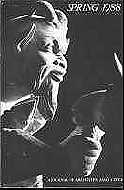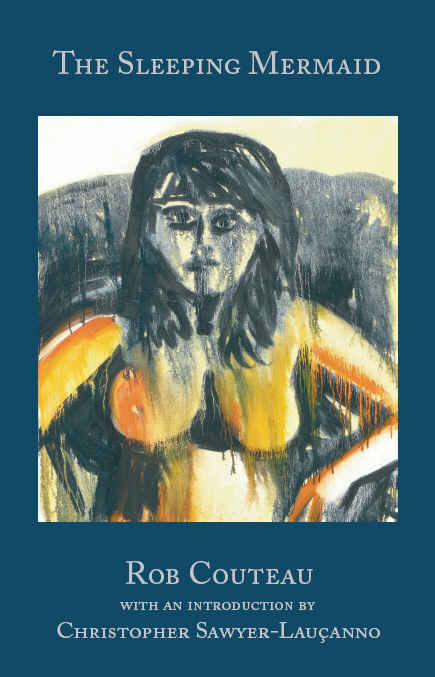|
by Rob Couteau
|
Published
in: |
|
|
||
|
My
introduction to the institutionalized mentally ill took place
in a psychiatric adult home in New York. My caseload consisted
of twenty-five adults, most of them between fifty and seventy
years old. All were heavily medicated, the majority for schizophrenia.
Some were actively delusional. Almost all were labeled "chronically
mentally ill."
I often thought of Jung's fruitful experiences in the Burgholzli Psychiatric Hospital in Zurich, where he worked from 1900 to 1909. His work with a similar population led him to the underworld: to the realm of archetypal life. His exposure to this foreign underworld culture marked his primary divergence from Freud. Theirs was a difference of population exposure: Freud's tamer upper-middle-class Viennese population deprived him of the more revelatory research into severe psychosis. Whereas Jung, by situating himself in the state system, encountered the refuse of the collective society, and this contact led him directly into the collective unconscious. Ironically, it was the nearly complete rejection of Jung and Jungian psychology from our American university system that allowed me to introduce Jungian notions to my colleagues and superiors and, thus, to my patients. I encountered many who were open-minded about Jung due to their ignorance of his approach: they had not even been "warned" about him. Therefore, I was able to discuss Jungian ideas in my own language, in a nonthreatening and understandable way. Not everyone showed interest or even agreed with Jungian theory, but I was at least allowed to work directly with my patients in a Jungian mode. Many of the institutionalized patients responded well to Jungian-oriented therapy. Some were able to discuss the complex theory and ideas about compensation (especially inferiority and superiority, which are so crucial in schizophrenia), as well as to grasp the meaning of archetypes and to embark upon a dream analysis. Our discussions, even when they were not fully understood by the patient, provided the soul with something else: a sense of meaning reentered their lives along with the sense of healing this produces. In addition to the expected benefits of dream analysis, I was able to anticipate many oncoming hospitalizations through the study of a patient's dreams. It has been noted that, in Burgh�lzli, Jung encountered "the unbearable torture of not understanding."1 More than eighty years later, I worked for three years within the state system, nervous about my inexperience, yet confident only because of all I had learned from Jung. There I encountered a population not unlike his, and when attentively listening to a patient's fascinating delusion I was often reminded of Jung's own patients "stories," such as the man who saw the solar tube, which, he explained, was the origin of the wind. This was how Jung had learned about the collective unconscious and how he had refined his own process of soul making and of reaching into the soul of a patient (something that cannot just be read about but that must be experienced, firsthand.) I began to comprehend the notion of severe illness as a magnifying glass of the soul.3 Sometimes, the only benefit derived from such illness is the insight gained about psyche by the analyst observing "from the outside." Indeed, many of our patients were estranged from the mediating function of the anima and were, therefore, directly confronted with the chaotic abyss of the collective unconscious.4 Yet even for these patients, the presence of a therapistï - especially one who served as a surrogate anima (a therapist rooted in soul-making) - provided a vital link to their souls.5 While I felt my population similar to Jung's (except, of course, that mine were often "treated" with psychiatric drugs), within the orthodox institutions not much had changed regarding the therapist's "imagining" of the soul. Eighty years after Jung had first stepped into Burgh�lzli, I found none of his followers here or in any of the other sites I visited throughout the state system. With few exceptions, such as John Weir Perry's work,6 there was a gap in the Jungian community's involvement with the schizophrenic population at large. I began to wonder how this could be changed. After a year of working in the psychiatric nursing home, I began a new assignment at a community residence program. There, I supervised the work of six counselors, each with a caseload of seven patients (ranging in age from eighteen to seventy). Many were referred from state psychiatric hospitals by psychiatrists and social workers. Most were poor and received state funding. About fifty percent were black and Hispanic, and about fifty percent were female. In addition to receiving advocacy and counseling within our program, each patient worked with an independent, outside analyst: usually, once a week. It was our job to assist the patients in selecting an analyst. Before my arrival, many of the referrals to analysts were made without the patients' involvement, and most were seeing analysts who were psychoanalytically oriented. As director, I wanted to expand the options for the patients, so I tried to expand our referral network. As a result, we soon had patients in analysis with Gestalt, Adlerian, and other kinds of therapists. I also contacted over twenty Jungian analysts, hoping to arrange ongoing analysis for a few of our interested patients. My conversations with these analysts revealed a consistent (and odd) response to the idea of working with schizophrenics. For example, I "learned" that (to paraphrase their remarks) "Jungian psychology is not for everyone. It requires a certain amount of sophistication, which state hospital patients [poor and "ethnic" people] tend not to have. Analysis is not an appropriate treatment for schizophrenia. Schizophrenics don�t have the proper ego-structure to benefit from Jungian analysis." There was also a general belief that schizophrenics are "unemployable" (not a good investment?), "low functioning" (uninteresting?), and always on the "verge of psychosis" (presenting dangerous counter-transference problems?). I began to wonder: is Jungian eros lacking when it comes to schizophrenia? Is it because our notions of this illness are outdated, or have never been properly examined, or are even animus ridden? Have we an animus that stands in the way of treating such souls? Ironically, they are the ones most in need of analysts who claim to have an archetypal perspective, an anima rapport. Are we afraid to disturb, once again, our notion of anima: afraid that, in encountering the schizophrenic soul, we would come dangerously close to the horror vacui: of life without anima as mediator? Is the disinterest I encountered in treating the schizophrenic related to a disinterest in relating to the analyst's own "sick," "morbid," lost, and dislodged soul. Is there a tendency in the analytical community to stand so rigidly behind the persona of Jungian treatment theories that the individual soul is lost to the collective, institutional persona of Jungian thought? The questions I have raised concerning money and schizophrenia and of class, ethnicity, and schizophrenia are equally as disturbing. In not adequately reaching out to these sectors of the social collective, we are turning away from valuable "sectors" of psyche itself. For as Jung used to say, in the collective, are all those elements found within the collective unconscious. Which means that we must not deny any area of the collective if we are to fully explore the geography of the soul ("Nothing human is alien to me").7 To me, this meant giving voice to my own particular experience of Jungian social neglect: not to neglect it or its importance as prima materia, as concrete as well as metaphoric experience of what is wrong with such an insular, unfeeling connection to society. Our shunning of the schizophrenic in the social collective is similar to the schizophrenic devoid of the anima mediatrix: the anima standing before the horrible void of endlessness.9 By not allowing the anima to serve as a guide for others, we prove our deficiency of anima: we become "morbid," "sick"; we serve as a metaphor for the "I" who views the collective, and thus the collective unconscious, without anima: as mere void, abyss, and horror. Without her intercession, we are possessed by our rational distancing: as possessed as the schizophrenic who can find no orientation in the upperworld. By our disinterest, we imprison an aspect of soul that we feel is too weird and that lacks the "right" look ("wrong" because we fear to look, to contemplate). If new ideas are lacking in the Jungian world, it is because too many analysts (with their high fees, yearning for high social status, and desire for clientele with a high sophistication) are trapped in the upperworld of Freud's upper-middle-class milieu. From this perspective we are distancing ourselves from the soul, barring it from showing us its new and unique images. This paucity of imagining is the price we pay for the safety of our distancing. By creating a dogmatically predetermined Jungian world - one that excludes unique yet disturbing facets of the soul - we exclude the soul of the world-at-large. (Could this explain the regressive turn of analytical psychology into a fantasy of merging with object-relations; the interest in narcissism and other traditional clinical terminology; and the turning to post-Freudian ideas with a sort of compulsion?) If we are to turn about, perhaps it should be to reflect upon our own roots: Jung�s first steps into the professional world, treating the mentally ill in Burgholzli. His description of Burgholzli and of the other clinics of his time can easily be applied to the attitudes I experienced in many Jungians today: "Patients were labeled, rubber-stamped with a diagnosis, and, for the most part, that settled the matter."10 Rather than succumb to this approach, Jung realized that "A personality, a life history, a pattern of hopes and desires lie behind the psychosis. The fault is ours if we do not understand them."11 He noted not only the importance of working with psychosis but also the feasibility of doing so psychotherapeutically: and this in an age without medication. And he wondered: "It was always astounding to me that psychiatry should have taken so long to look into the content of the psychoses.... It seems equally odd to me that my investigations of that time are almost forgotten today. Already at the beginning of the century I treated schizophrenia psychotherapeutically."12 We are neglecting a thread of our own historic soul making by neglecting Jung�s pioneer investigations. We fail by not being present as educators and as analysts in the treatment centers for the mentally ill; by not utilizing funding mechanisms that enable us to reach out to the poor; and by our lack of social involvement in the one area (the imaging of the soul) where we have not only an expertise but also a distinct responsibility. 1.
Barbara Hannah, Jung, His Life and Work (New York
G.P. Putnam's Sons, 1976), 75-77. |
||
|
This essay is featured in: |
||
Updated: 29 June 2011 | All text Copyright © 2011 | Rob Couteau | key words: psychosis, dementia praecox, Freud and Jung, Vienna, treatment of schizophrenia, Burgholzli Psychiatric Hospital in Zurich Jungian |


